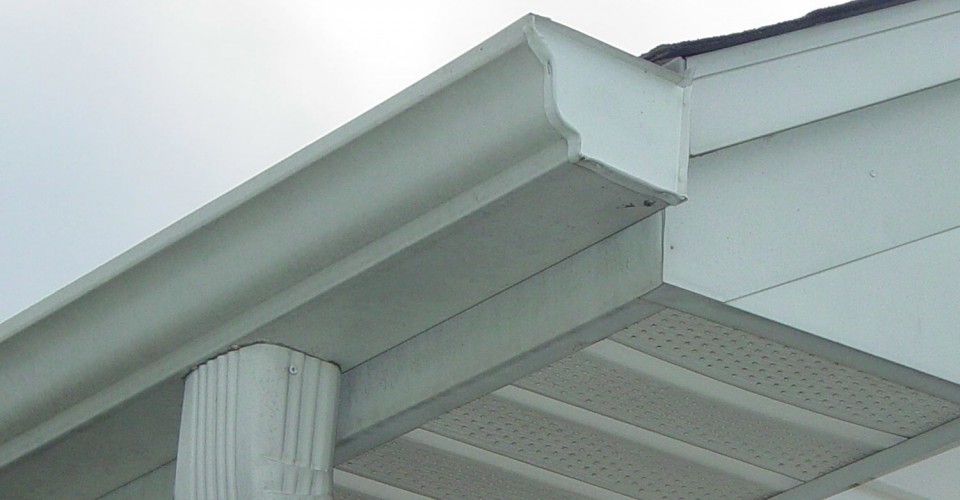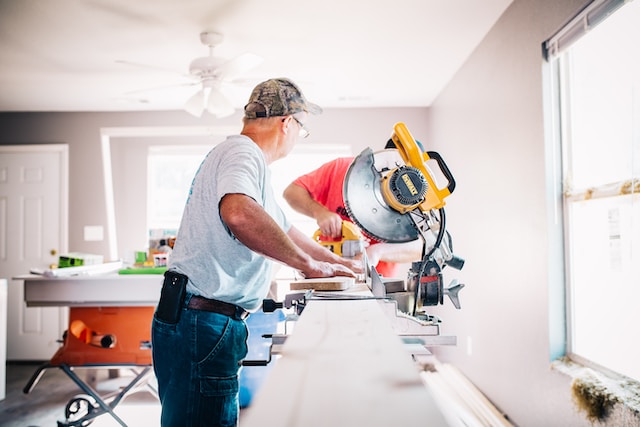The gutters on your roof are an important feature of the home, especially if you live in a rainy climate. The gutters help manage and direct the water that flows down the slope of the roof and on to the ground. Well-designed and functional gutters can also help prevent water from leaking into the foundation of the home, or cause soil to wash away. Understanding the functionality of the gutters, and how to maintain them, is an important part of home ownership. Before you get out a ladder or climb your roof, be sure you do this safely and have another person on hand in case you run into trouble. If you are unable to reach your gutters safely, be sure to hire a professional to do this for you.
How to remove leaves and debris from gutters
You’ll want to remove all leaves, needles and other debris from the gutter system. If you regularly receive a lot of leaves into the gutters, install a gutter filter system that allows water to run through the gutters but traps debris. Downspouts and connection points are prime areas of blockage so clean those out as well. Simply scooping out the debris by hand is the easiest way to clean the gutters. You can also use a narrow scooper to grab more leaves and needles. You can test how clean the downspouts are by inserting a hose and turning on the water. If water comes out the other end then you know it’s clear. While you’re cleaning the gutters, take time to look at where the gutters meet the roof and notice if the shingles look warped or damaged. Clogged gutters can create a backup situation where wet leaves and organic materials can break down the roof system. So keeping your gutters clean will actually help maintain your roof system as well. Always consult with a professional if you feel that the gutters have come loose, are damaged or if you feel they need replacement.
Best placement of downspouts
It’s very important that the downspouts of the gutter system are directed in the appropriate place. Some downspouts are joined to an underground pipe that allows the water to flow from the roof, down the downspout and out onto the ground far from the home. Other downspouts simply empty out onto the ground or driveway – it’s imperative that these deposit areas are at least 5 feet from the foundation. Sudden downfalls of rain can cause stagnant pools of water to form close to the home so the further away the downspout is from the home’s foundation, the better.
Gutter maintenance
The best gutter maintenance is regular maintenance. It’s common for leaves, needles and debris to get trapped inside the gutters. A mesh screen or guard system can prevent too much debris from blocking or clogging the gutter system. The real trouble is when those leaves and debris start blocking the downspout. When this happens, water gets trapped inside the trough of the gutters, spilling out over the edges or worse, backing up under the eaves and damaging the under layers of the roof system. Keeping your roof free from leaves is a great way to ensure that your gutters stay relatively empty of debris.
Remember that climbing up a ladder to clean and inspect the gutters is potentially very dangerous. In fact, each year thousands of homeowners are sent to the emergency room due to falls off of ladders. It’s worth the money to hire a gutter cleaning service to annually inspect your system and clean them out. A professional has been trained in ladder safety and knows how to safely work a roof system.
Gutter maintenance and home insurance
Most home insurance policies do not cover flood or water damage caused by clogged gutters. However, your homeowner’s insurance may cover damages to your gutters resulting from specific perils, such as windstorms, lightning strikes, or falling objects. We recommend you read your policy to determine the covered perils and understand that maintenance-related issues, such as clogged gutters, which are generally not covered.
Maintaining your gutters is your responsibility, and it’s important to keep them clean and free of debris to prevent water damage and other home damage. Some benefits of regular gutter maintenance include:
- Preventing clogs and overflows: Regular cleaning and inspection of gutters can help ensure that your gutters remain relatively empty of debris, reducing the risk of water damage to your home.
- Extending the life of your gutters: Proper maintenance, including cleaning and checking for wear and tear, can help prolong the life of your gutters and avoid costly repairs or replacements.
- Reducing the risk of accidents: Climbing up a ladder to clean and inspect gutters can be dangerous, so it’s worth considering hiring a professional gutter cleaning service to inspect and clean your gutters.
Gutters in cold climates
If you live in regions of regular snow or cold temperatures then you’re familiar with ice dams. An ice dam is when a gutter trough filled with water freezes, turning into ice. During a cold snap, this ice can continue to build up as melting snow from the roof drips water into the ice dam and freezes over night. This process, repeated over and over again, can create massive ice blocks that wedge their way under the roof, causing significant damage. As the ice melts, the water can easily make its way into the attic, causing further damage. Ice can also form inside the downspout, especially if the downspout is already clogged with leaves. Expanding and heavy ice can loosen connection points, dislocate the downspout or move gutters out of place.
Some homeowners combat ice dams by installing a heating system in their gutters. These heaters are designed to work in a wet climate and prevent ice from forming overnight. You can find a professional gutter specialist on Porch who can help install this type of system.
A brief history of the gutter
The idea of directing and managing water is an old building technique. The ancient Romans built massive aqueduct systems as well as gutters. When the Romans brought many of their building and construction methods to Great Britain in 47 A.D., the idea of a water channel attached to the roof quickly caught on. Gargoyles served as clever downspouts and were connected to the gutter system on a roof. Early rain gutters would have been made from stone or wood. In the 1700’s cast iron became more readily available and it wasn’t until the 20th century that rolled metal became available for use in residential buildings. According to Gutters.com, “In the 1960’s, the invention of seamless aluminum gutters changed the situation completely. A machine was developed that holds a roll of aluminum, called gutter coil, at one end, and extrudes a formed gutter at the other end. The formed gutter can be cut to any length desired and custom fit to the home on site. This method of creating gutters without seams, makes the gutters stronger and leak proof.”
Today’s gutters
Nearly 70% of today’s gutters are made from this seamless aluminum material, which is offered in a variety of colors. Some homes use copper gutters or a more sophisticated hidden gutter system. More progressive homeowners are using gutters to collect a precious commodity: water. Although usually seen as an afterthought, your home’s gutter system is an incredibly important part of the roof system and is designed to protect the home from water damage. There are a variety of sizes, shapes and pricing so when shopping for new gutters, have a good idea about your overall budget and gutter needs.




